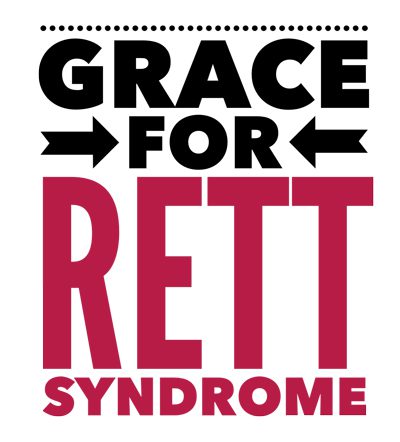by Elizabeth Halford, with contributions from Steve Kaminsky, Ph.D., Janice Ascano, Ph.D., Paige Nues, Monica Coenraads and Kori Coates.
As of late, there’s been much buzz about gene therapy as a potential treatment for Rett syndrome. And for good reason! Gene therapy isn’t new. In fact, it’s been used to treat a number of disorders, among them: retinal disease, acute lymphocytic leukemia (ALL), multiple myeloma and Parkinson’s disease.
Dr. Gail Mandel said in a recent interview with RSRT that one good reason to consider it for Rett syndrome is that “…the genetic studies pioneered by Adrian Bird showed that it’s a reversible disease, even in late symptomatic stages in mice. So that suggested that you could put back a good copy of MECP2 and possibly reverse or maybe stabilize or just improve by putting it back.”
Currently, there are tests going on to see exactly how we can whip the MECP2 gene into shape, change the biology of Rett syndrome and reverse its symptoms. Some exciting advancements have been made so today, I’d like to bring some clarity on the topic and tell you what I know (and more importantly, what I don’t yet know) about gene therapy.
[the first study]
In 2013, a paper published in Molecular Therapuetics first discussed the possibility of using a virus, called AAV9, to do gene replacement in Rett mice. Essentially, they used AAV9, an altered version of the common cold virus, to encapsulate healthy Mecp2 and sneak it into the brain cells. In this study* scientists Stuart Cobb, Steven Gray and their teams “demonstrated reversibility of RTT-like phenotypes in mice. This suggests that MECP2 gene replacement is a potential therapeutic option in patients.” and that “These results support the concept of MECP2 gene therapy for RTT.”
The study reported improvements in motor function, tremors, seizures and compulsive movements. One symptom which didn’t respond to the therapy was abnormal breathing.
They concluded the paper by saying that this work shows, at “proof-of-concept level”, that MECP2 can be delivered at a tolerable level via AAV2/9 vectors (those viruses we mentioned before) to the brain of Mecp2-null mice. Longer-term studies in female mice are the next steps before any human application can be considered.
[the second study]
So that first study into gene therapy for Rett syndrome concluded that, yes, it is possible that a virus could deliver healthy MECP2. But it ended with the next step being the need to now test in female mice. Remember, even though Rett mainly happens in females, these studies usually start with male mice.
Many people in the Rett community will have seen, read or heard about recent announcements about gene therapy studies being successful in female mice. The paper, published in the Journal of Neuroscience, reports that the study**, led by Molecular biologist Gail Mandel, of Oregon Health and Sciences University, used a similar virus as the first study. The same results were seen as in the first study, including non-reversal of breathing problems. What was different about this particular study (other than the fact that it was done using female mice) is that a 10-15% uptake of MECP2 in the brain was achieved to get a reversal of symptoms as opposed to only 5% uptake in the first study.
This revelation very much lines up with something Dr. Steve Kaminsky told me recently when he said that “You may not need a 100% gene reversal or modification to treat Rett syndrome. Perhaps if we could make incremental increases with different methods and different cocktails of drugs. For example, what if MECP2 gene therapy could incrementally improve function with movement and hand use? Then, what if a compound (like a statin) and a second drug could improve each by an additional 10%, 15% or 20%? Each different treatment may result in a percentage of recovery but together will work in synergy to treat the symptoms of Rett syndrome.”
These gene therapy studies are examples of discovery based research and there is still a lot of work before they can be transferred to the clinical environment. So to this end we also need to be pursuing immediate clinical research to change the biology associated with Rett syndrome. Monica Coenraads, Executive Director of RSRT said recently in an interview with Dr. Mandel that, “I say this to families often: we can work on downstream targets – BDNF, IGF-1, Chromatin remodeling, a whole long list of drugs. They’re not gonna cure Rett syndrome. They may improve one or two symptoms which, you know, because the girls have so many symptoms, we would take any improvement in any symptom. But if we really want to see the dramatic cure that everybody talks about, for that I think we need to address the underlying genetic problem.” In the same interview, she also tell us, ”I think it takes a lot of different perspectives and ideas and ways of looking at a problem because this is a complex protein and a complex problem.” To that end, she agrees that we should also be looking into other avenues for treatment of Rett. She told us, ”It’s important to pursue as many approaches as possible since we don’t know what will pan out” and that “Activating the silent MECP2, gene modifiers, downstream targets are all on the table. As is continued basic science to better understand what MECP2 does in the hopes that it will inform us on potential new strategies.”
[the challenge]
Although these experiments are super, there are substantial challenges with using these methods to deliver MECP2 to brain cells. One being that the virus hits the normal neuron and the mutant neuron. That’s like hunting with a shotgun. It’s going to hit everything. If AAV9 could be designed to recognize the mutant and leave the healthy neuron alone, that’s hunting with a sniper rifle. In the Rett patient, the body of the neuron is smaller. In these studies, it was shown that the body of the neuron grew, but that also happened in the healthy cells, not just the mutant ones. If the efficiency of uptake is increased, could we see over expression of MECP2 in the normal neuron and would that induce a MECP2 duplication syndrome in those cells? We just don’t know, and this will be a large challenge for any regulatory agency approving these therapies in the future.
We want to leave the healthy neuron alone and hit the mutant one. That’s science fiction right now. No one can do that. The viruses, as they are now, hit everything. And this is why gene therapy is so hard with Rett – half of the cells are normal, half are mutant.
Yes, gene therapy works for other disorders, but that’s because all the cells are affected so a shotgun is your weapon of choice. What the FDA would want to know before testing on humans is what are you doing to the pathology of the normal cells? As the data stands now, the FDA would say that we’re nowhere near ready. This is a whole new area for the FDA and because of the deaths that have been associated with gene therapy along the way, gene therapy has a bit of baggage that goes along with it. The Biologics Division at the FDA is very finely tuned and, according to Dr. Kaminsky, “we can’t even begin to talk to them until many of the basic challenges associated with using AAV vectors with Rett syndrome models have been worked out. So we still have a steep hill to climb, but it is worth climbing.”
[what next?]
Gail Mandel cautions at the end of the recent report that (according to this post from Autism Speaks) ”…important steps – including safety studies – remain before this gene therapy is ready for clinical trials with human volunteers.” That means more mice studies.
So now we’ve proven that:
- Gene replacement using a virus is possible in male mice
- Gene replacement using a virus is possible in female mice
What’s left to discover? Lots. And lots.
We are still at the fundamental basic stage of this science. Dr. Kaminsky tells us that “we are still 5-10 years away from having vectors that can do the things we’d like to do. In the meantime there are many other approaches to Rett that could have immediate effects on Rett biology. So we are targeting the downstream pathways that could bring immediate change for Rett patients and improve their quality of life. I think all of this is great conversation. It’s wonderful research by Stuart, Steven and Gail, but in the meantime we’re moving forward with known drugs to see if we can get incremental improvement in our girls.”
I personally believe in pursuing both paths. A dramatic cure would be ideal and there’s science working on that. But what happens when/if we put all our eggs into the gene therapy basket and the human clinical trial (which is many years away) possibly fails mid-study? Even in the final stages of trials, we often see failure. As in this heartbreaking story about a drug trial for Fragile X syndrome. In the case of gene therapy trial failure, we would be taken backwards at least a decade if we didn’t have other studies in place. I support the science of looking at downstream targets, testing existing drugs and gene therapy. It’s all good.
[in conclusion]
I think the most inspirational view of gene therapy for Rett syndrome came to me in conversation with Dr. Kaminsky while preparing this post. He told me, “Gene therapy is a very distant star but hopefully we will be able to navigate to it. A number of scientists looking into this. A number of organizations are funding gene therapy, but it’s a distant star so we need to take multiple approaches. If we hang our hat on this one approach, a single failure means we’re taken back a decade. When playing chess, you have multiple ways you can move across the board with multiple strategies in place. With these two papers we are light years closer to that distant star.”
* The work was supported by grants from the International Rett Syndrome Foundation (SJG), from the Medical Research Council (SRC; grant no. G0800401) and from the Rett Syndrome Association Scotland (SRC/MESB)
** The work was supported by the Rett Syndrome Research Trust, the National Institutes of Health (to G.M.), the Wellcome Trust (Grants #077224 and #091580), Medical Research Council, UK (Grant #G0800401), Action Medical Research in association with the Henry Smith Charity, and the R.S. MacDonald Charitable Trust (Grant #SP4443 to A.B.)







